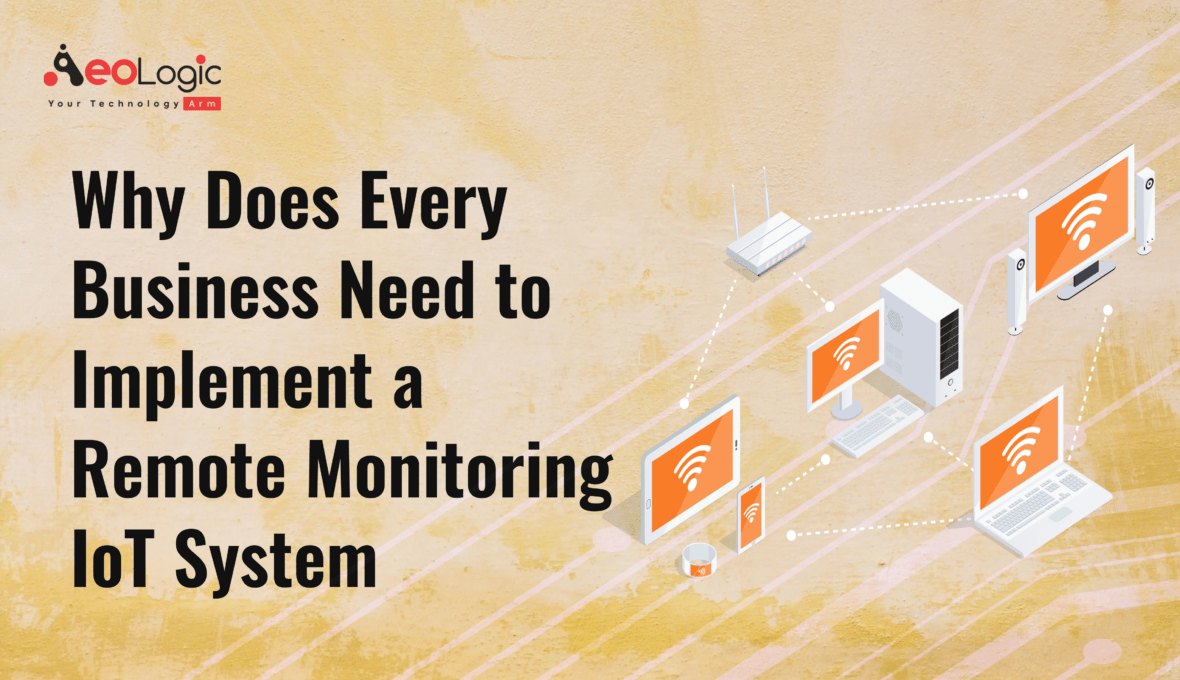Picture this scenario: you’re managing a business, and you’re constantly worried about unforeseen equipment failures or unexpected energy usage spikes. Or maybe you’re simply unable to be everywhere at once to oversee operations. This might sound familiar, right? But what if I told you there’s a solution right at your fingertips? It’s called IoT remote monitoring system, and it’s a game-changer.
What is IoT Remote Monitoring System?
Before we delve into the reasons why every business needs IoT remote monitoring system , let’s define what it is. IoT remote monitoring is a system that allows businesses to monitor and manage their operations remotely, in real time, using Internet of Things (IoT) devices. This technology has been revolutionizing businesses across the globe, and here’s why you should consider jumping on the bandwagon.
Also Read: Top IoT Solutions for Heavy Equipment Management
Enhancing Operational Efficiency with IoT Remote Monitoring System
The first and foremost reason to implement IoT remote monitoring system is to enhance your operational efficiency. Imagine being able to track your machinery’s performance, predict equipment failures, and optimize energy usage. According to a 2020 study by Statista, businesses implementing IoT for monitoring and predictive maintenance have reported efficiency improvements of 18% to 25%.
Real-Time Data Access for Informed Decision-Making
In a world where information is king, having real-time data at your disposal is invaluable. With IoT remote monitoring system, you have the ability to monitor your business operations 24/7, from anywhere in the world. This means you can make informed decisions, swiftly respond to changes, and stay ahead of any potential issues. According to Gartner, by 2022, more than 80% of enterprise IoT projects will include an AI component, up from only 10% today.
Also Read: How To Implement IoT in Your Business and Why It Matters?
Enhanced Security and Cost Savings
Security is a crucial aspect of any business. With IoT remote monitoring, you can not only monitor your premises but also detect any potential security breaches. IoT devices can be used to track movement, record video, and even detect unusual patterns, significantly reducing the risks associated with theft or vandalism. Additionally, by monitoring equipment and energy usage, predictive maintenance becomes possible, reducing the chances of costly breakdowns. A report from Business Insider indicates that businesses could save up to $70 billion on field service costs in the coming decade by using IoT.
Also Read: Smart IoT Solutions for Supply Chain Management
Improving Customer Experience and Unlocking New Business Opportunities
A Remote Monitoring IoT System not only enhances your existing operations but also opens the door to new business opportunities. You can leverage the data you’ve gathered to identify gaps in the market, develop new products or services, and even enter new markets. Furthermore, IoT devices offer a unique opportunity to bridge the gap between businesses and their customers. With these devices, businesses can understand their customers better, offer personalized experiences, and build stronger relationships.
Also Read: IoT in Agriculture: Cultivating Productivity with Smart Farming
Overcoming Challenges in IoT Implementation
While IoT offers a plethora of benefits, it’s also crucial to be aware of the challenges that come along with its implementation. However, with the right strategies, these potential roadblocks can be effectively navigated. Here are some of the main challenges and how they can be addressed:
- Security Concerns: IoT devices are often targets for cyber-attacks. Therefore, it’s essential to implement robust security measures, including data encryption, secure device authentication, and regular software updates.
- Data Privacy Issues: IoT devices collect a massive amount of data, raising concerns about data privacy. To address this, businesses must ensure they comply with all relevant data protection regulations and provide transparent communication to customers about how their data is being used.
- Need for Skilled Personnel: Managing an IoT system requires personnel with specific skills in data analysis and cybersecurity. Companies can overcome this challenge by investing in training for existing employees or hiring experts in the field.
- Integration with Existing Systems: Integrating IoT technology with existing systems can be a complex process. However, choosing IoT solutions that are compatible with your existing systems, or seeking the help of experts for seamless integration, can solve this issue.
- Cost of Implementation: The initial cost of implementing IoT can be high. However, businesses should view this as a long-term investment that will bring about substantial cost savings and efficiency improvements in the long run.
While these challenges may seem daunting, they should not deter you from exploring the vast potential of IoT. With proper planning and execution, the benefits of implementing a Remote Monitoring IoT System far outweigh the challenges.
Also Read: Role of the Internet of Things in Smart Manufacturing
Final Words: Embrace the Future Today
It’s clear that implementing a Remote Monitoring IoT System is not merely an option but a necessity for businesses looking to stay competitive in today’s digital era. From improving operational efficiency to enhancing customer experience, the benefits are far-reaching.
So, are you ready to embrace this future-proof solution and take your business to new heights? Remember, in the world of business, staying ahead is not just about keeping up with trends. It’s about being a trendsetter and adopting a Remote Monitoring IoT System can help you do just that.
If you’re ready to explore the benefits of IoT solution and need expert guidance, feel free to connect with Aeologic Technologies. Let’s shape the future of your business together.






